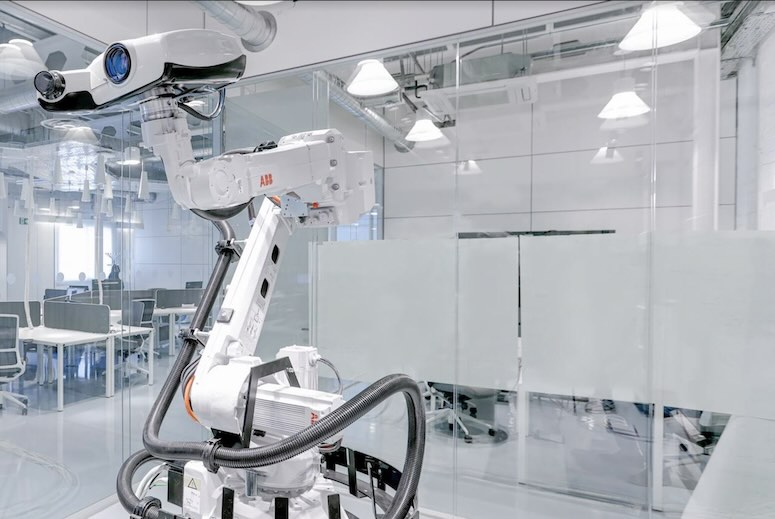|
Listen to this article  |
ABB says its robotics story started in 1974 with what it calls the “sale of the world’s first commercial, all-electric robot, the IRB 6.” In 2024, 50 years later, ABB’s robotics portfolio is stronger than ever with new industrial robot arms, collaborative robot arms, and autonomous mobile robots.
ABB will be celebrating 50 years of robotic innovation throughout 2024. Marc Segura, president of ABB Robotics, is helping do just that by identifying the following three drivers of robotics-driven AI solutions in 2024 and beyond.
Editor’s Note: the following text has been republished from ABB with its permission.
“The coming year will see a growing focus on the critical role of AI,” said Segura. “From mobile robots and cobots, to enabling new robotic applications in new sectors and creating new opportunities for people to learn and develop, these new frontiers for AI are redefining the future of industrial robotics.”

ABB’s 3DQI quality inspection cell can detect defects less than half the width of a human hair. | Credit: ABB
1. AI will drive new levels of autonomy in robotic applications
Accelerating progress in AI is redefining what is possible with industrial robotics. AI is enhancing everything from robots’ ability to grip, pick and place as well as their ability to map and navigate through dynamic environments. From mobile robots to cobots and beyond, AI is giving robots unprecedented levels of speed, accuracy, and payload carrying ability, enabling them to take on more tasks in settings like flexible factories, warehouses, logistics centers and laboratories.
“AI-enabled mobile robots can transform sectors like discrete manufacturing, logistics and laboratories,” said Segura. “Robots equipped with ABB’s new Visual Simultaneous Localization and Mapping (Visual SLAM) technology, for example, have advanced mapping and navigation skills, granting new levels of autonomy, while greatly reducing the infrastructure needed by previous generations of guided robots. This paves the way for a shift from linear production lines to dynamic networks, creating significant efficiencies and taking on more dull, dirty and dangerous tasks, to enable workers to take up more rewarding jobs.”
2. AI will see robots enter new sectors
The potential offered by AI-enabled robotics is influencing sectors far beyond manufacturing. In 2024, these technologies are expected to bring substantial efficiency improvements to more dynamic environments, such as healthcare and life sciences, as well as retail. Another example is the construction industry, where AI-powered robotics can make a material contribution to boosting productivity, enhancing safety and sustainable construction practices while spurring growth.
“The construction industry is a great example of a sector where AI-powered robots will prove transformative, delivering real value by addressing many of the issues facing the industry today, including worker shortages, safety issues and stagnant productivity,” said Segura. “Abilities such as enhanced recognition and decision-making offered by AI, coupled with advances in collaborative robots enable safe deployment alongside workers. These advances also enable robots to perform key tasks such as bricklaying, modular assembly and 3D printing with greater precision and speed, all while contributing to more sustainable construction by lowering emissions, such as concrete mixing on site, to reducing the need to transport materials across far distances with on-site assembly.”
3. AI will offer new opportunities for education and working with robots
The advances being made in AI and robotics is significant for training and education, closing the automation skills gap and making robots more accessible to more people and businesses. With AI making programming easier, through lead-through and even natural language, education can shift more towards how robots can assist humans more effectively, rather than just teaching programming skills. This transition will make robots more approachable and bring them to a wider audience, leading to new job prospects while helping alleviate labor and skills shortages.
“A shortage of people with the skills needed to program and support robots has long been a hurdle to the uptake of robotic automation, especially in small to medium sized manufacturing companies,” said Segura. “We will see this increasingly being overcome as advances in generative AI lower the barriers to automation and expand the focus of education beyond programming. Developments in natural language programming, powered by AI in which workers can verbally instruct a robot in its task, will create a new dynamic in human-robot interactions.”
Credit: Source link


Comments are closed.